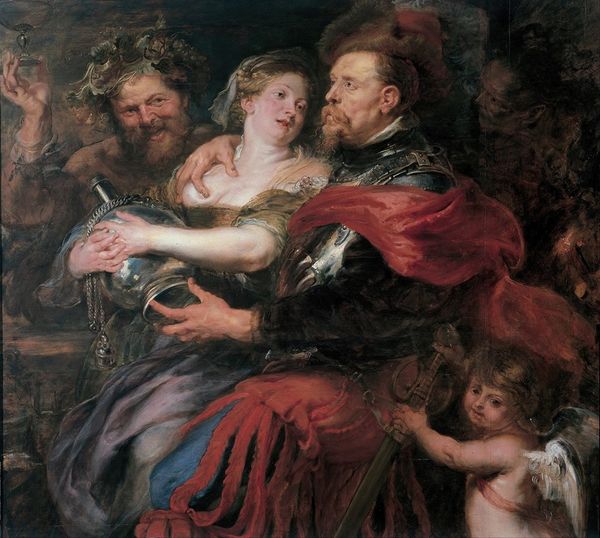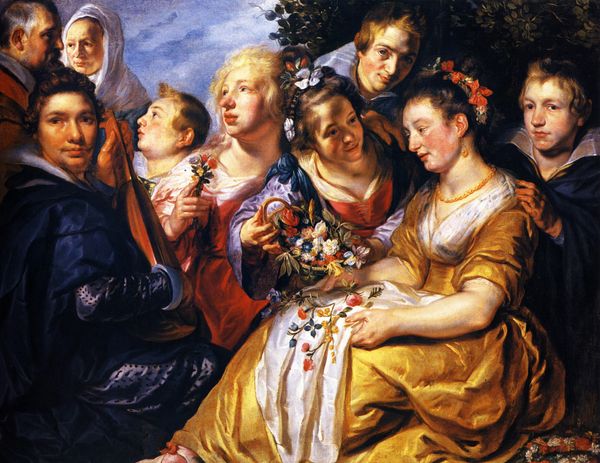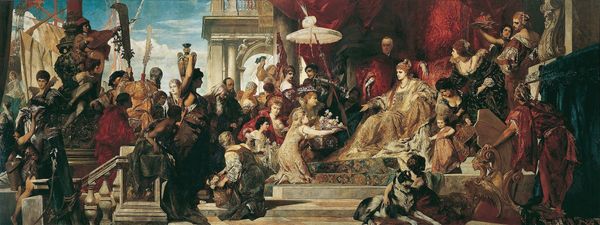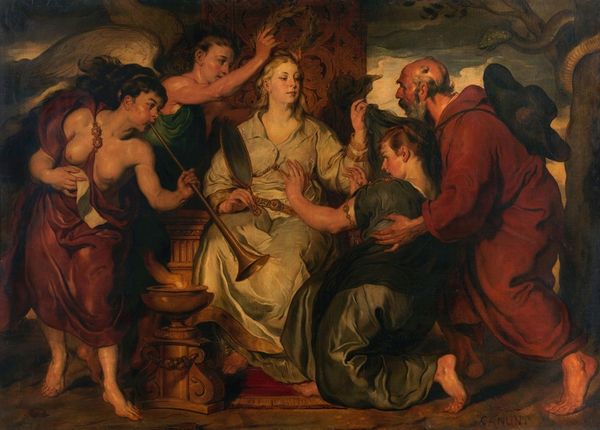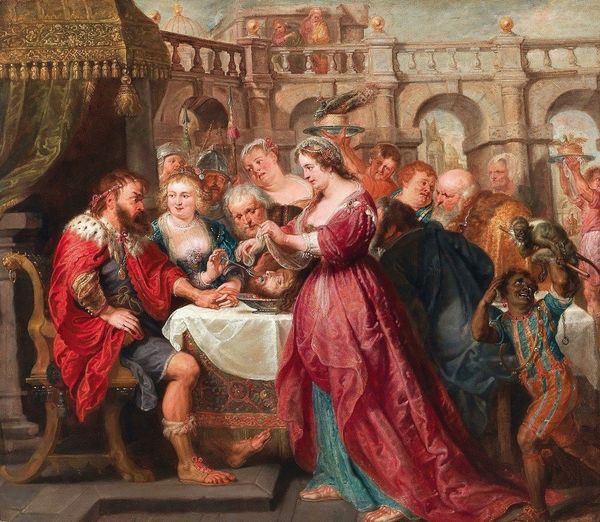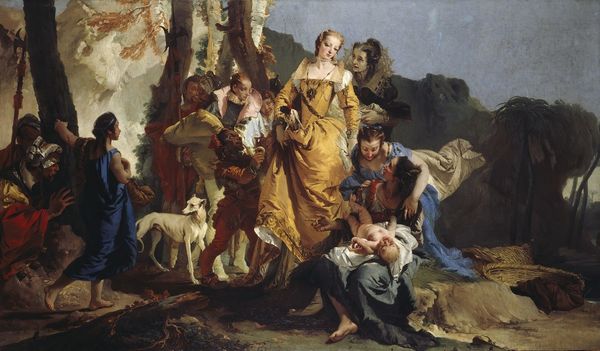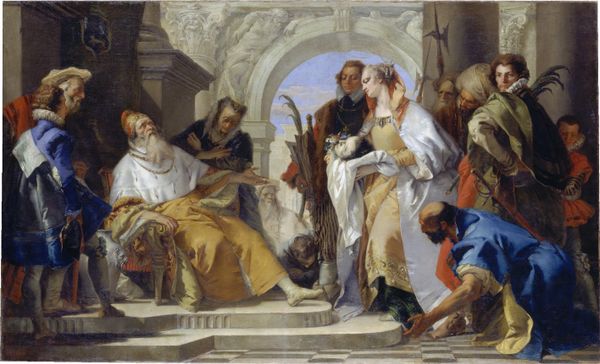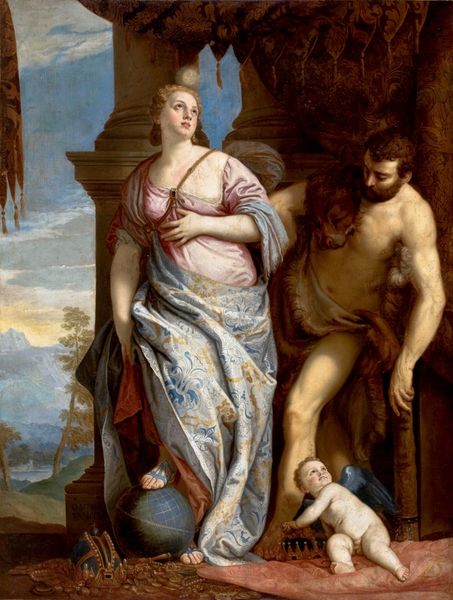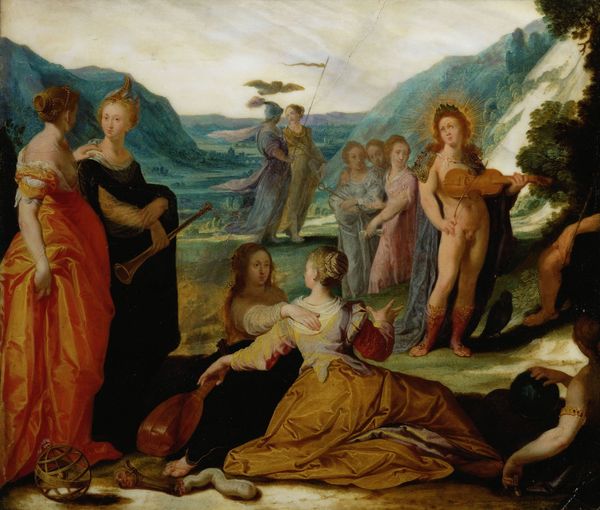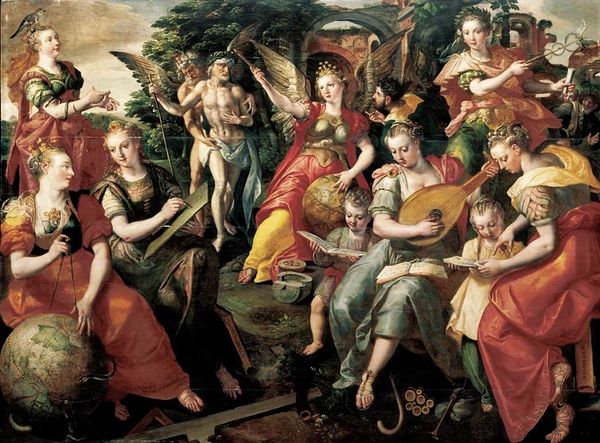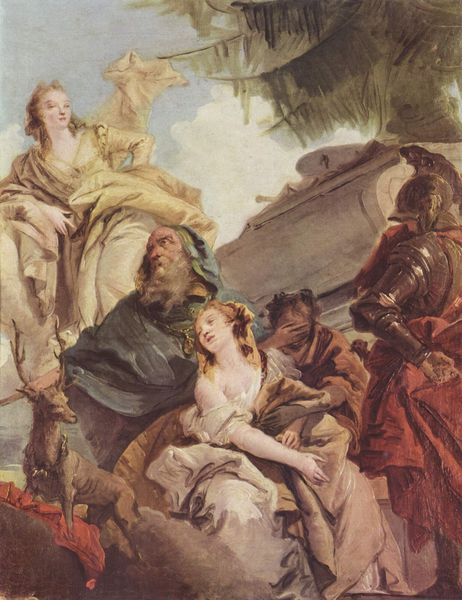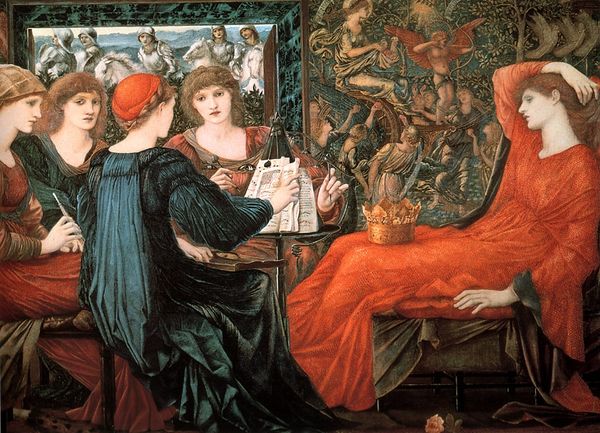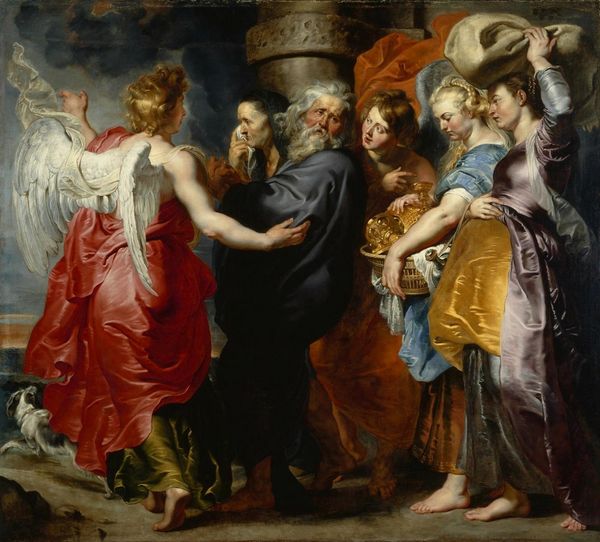
painting, oil-paint
#
portrait
#
venetian-painting
#
allegory
#
narrative-art
#
painting
#
oil-paint
#
perspective
#
mannerism
#
figuration
#
group-portraits
#
history-painting
#
academic-art
#
italian-renaissance
Copyright: Public Domain: Artvee
Curator: The dramatic scene unfolding before us is "The Madonna of the Cuccina Family" by Paolo Veronese, painted around 1571. I’m struck by its intricate composition and narrative. What's your first impression? Editor: My immediate reaction is opulent staging, and even excessive in terms of material and form. The artist creates an ostentatious display, particularly through his choice of vibrant color and detailed textures across that grand, monumental space. Curator: Exactly! Veronese often used a very particular method. His application of oil paint here creates a tapestry effect of luxurious fabrics; the reds and golds literally speak volumes about the Cuccina family's wealth and status within Venetian society. Editor: Considering its history, one must explore how Veronese caters to his wealthy patrons. The Cuccina family obviously employed him. That in itself is significant; it places artistic labor within a very specific social context. The power dynamics present should influence the viewing experience as well. Curator: Absolutely. Veronese cleverly uses elements of Venetian painting—dramatic perspective, brilliant colors, dynamic composition—but for more than mere decoration. Notice how he subtly includes the family's coat of arms amidst biblical figures and historical characters. This places them directly in the canon. It gives the Cuccina family instant power! Editor: Precisely. In doing so, he transforms religious iconography into something that can be purchased. What once was sacred or divine is available to those with appropriate monetary status or power within society—essentially turning virtue into merchandise through labor processes! The material reality here overshadows spiritual interpretation. Curator: But perhaps that commodification speaks volumes about the shifting socio-political landscape. This period in Venice marks increasing merchant power challenging traditional noble authority. This type of artwork both mirrored and amplified this trend; powerful families became increasingly preoccupied with legacies constructed around material wealth! Editor: Very true, its cultural footprint is quite visible today too, reflecting ongoing debates surrounding patronage and commodification in the contemporary art market! Curator: Examining its role in Venice's shifting social landscape is enlightening. I hadn’t fully considered the family name within religious iconography! Editor: Right! Viewing it through the lens of labor and materialism exposes that crucial power dynamic beneath that glorious aesthetic facade.
Comments
No comments
Be the first to comment and join the conversation on the ultimate creative platform.
